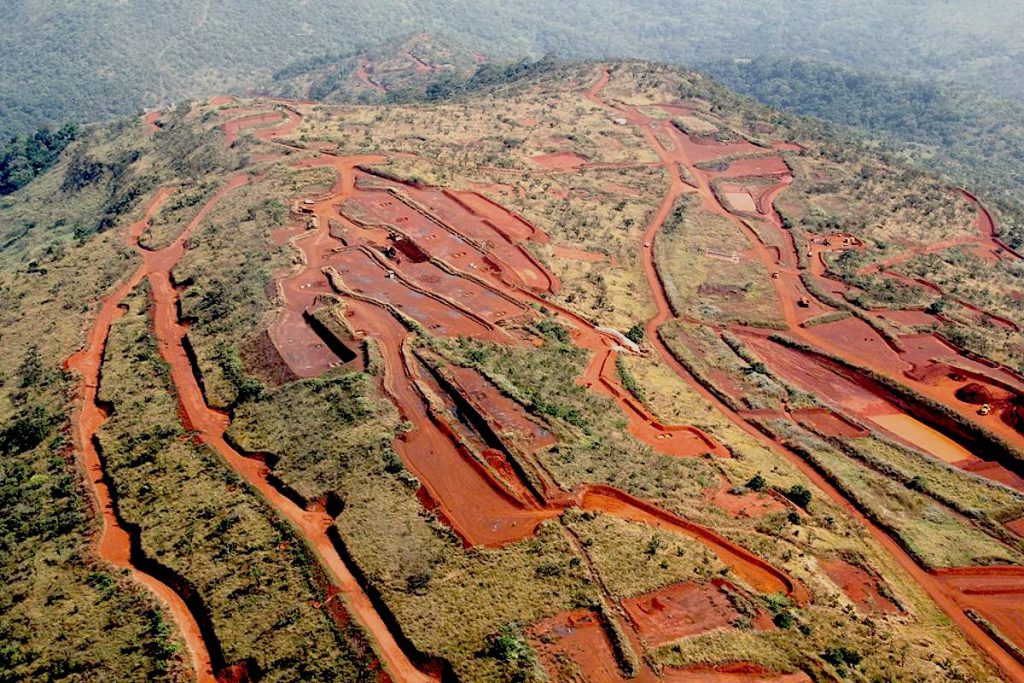
“[Colonel Doumbouya] therefore ordered the cessation of all activity on the ground pending the answers to questions posed to various actors and the clarification of the operational mode by which the interests of Guinea will be preserved,” government spokesperson Ousmane Gaoual Diallo said in the statement.
Simandou, owned by Rio Tinto and a Chinese-backed consortium, spent years in limbo because of disputes over ownership rights and the complexity and expense of transporting ore to the coast.
Rio Tinto said on Friday it was not making any public comment on Guinea’s move at this stage. The world’s second largest miner owns about 45% of Blocks 3 and 4 of Simandou, while Aluminum Corp. of China (NYSE: ACH) holds 40% and Guinea’s government the remaining 15%. Blocks 1 and 2 are controlled by China-backed SMB Winning Consortium.
“It’s a bold move by Doumbouya, and it may yet come back to bite him,” Eric Humphery-Smith, Senior Africa Analyst at risk intelligence company Verisk Maplecroft, said in a note. “This is the culmination of several months of rumblings that now have risen to the surface and boiled over.”
“Caviar of iron ore”
At two billion tonnes in iron ore reserves and some of the highest grades in the industry (66% – 68% Fe, which attracts premium pricing), Simandou is one of the most easily exploitable iron ore deposits outside of Australia’s Pilbara region and Brazil’s.
At full production, the mine is expected to export up to 100 million tonnes per year. Simandou would by itself be the world’s fifth-largest producer behind Fortescue Metals (ASX: FMG, Vale (NYSE: VALE) and BHP (ASX: BHP).
Its development is also crucial China. The nation sees the project, described by Rio’s president of copper operations Bold Baatar as the “Rolls Royce of iron ore”, as an opportunity to wean itself off its reliance on Australia’s iron ore.
Guinea has said any developer of the mine must build a railway spanning the country, even though it adds significant costs and the route to port through neighbouring Liberia is much shorter.
SMB Winning Consortium had already started work on a 650-km (404 miles) railway linking Simandou to the port.
According to Humphery-Smith, Guinea’s decision to suspend all activities at Simandou reflects mostly the “power struggle” between the SMB consortium and Guinean authorities regarding recommendations they made in December in relation to the rail and port infrastructure.
“These developers are used to getting their way as the Guinean government has historically not offered much resistance (…) We don’t expect this to drag on much longer than a couple of months,” he wrote.
TIMELINE: The battle for Simandou
High Power Exploration (HPX), a Canadian mining company controlled by billionaire Robert Friedland, is facing similar transport issues which it hopes to solve by getting access to a Liberian railroad to develop its Nimba project.
“A major attraction when you develop a bulk commodity type project is to be able to be not too far from a port and, even better, to have access to an existing infrastructure,” Guy de Selliers, chairman of Societe des Mines de Fer de Guinee, HPX’s subsidiary in Guinea, told Bloomberg News on Friday. “The location of the project is one of its assets.”
The Liberian government is currently examining an amended agreement to let multiple users access the Yekepa-Buchanan rail line and port, but it’s not clear what the extent of that access will be.
Vancouver-based HPX acquired Nimba in September 2019. Based on a 2015 report by the United States Geological Survey (USGS), Nimba holds roughly one billion tonnes of high-grade iron ore.
At full tilt, the mine is expected to churn out 30 million tonnes of high-grade iron ore a year.
(With files from Bloomberg)




